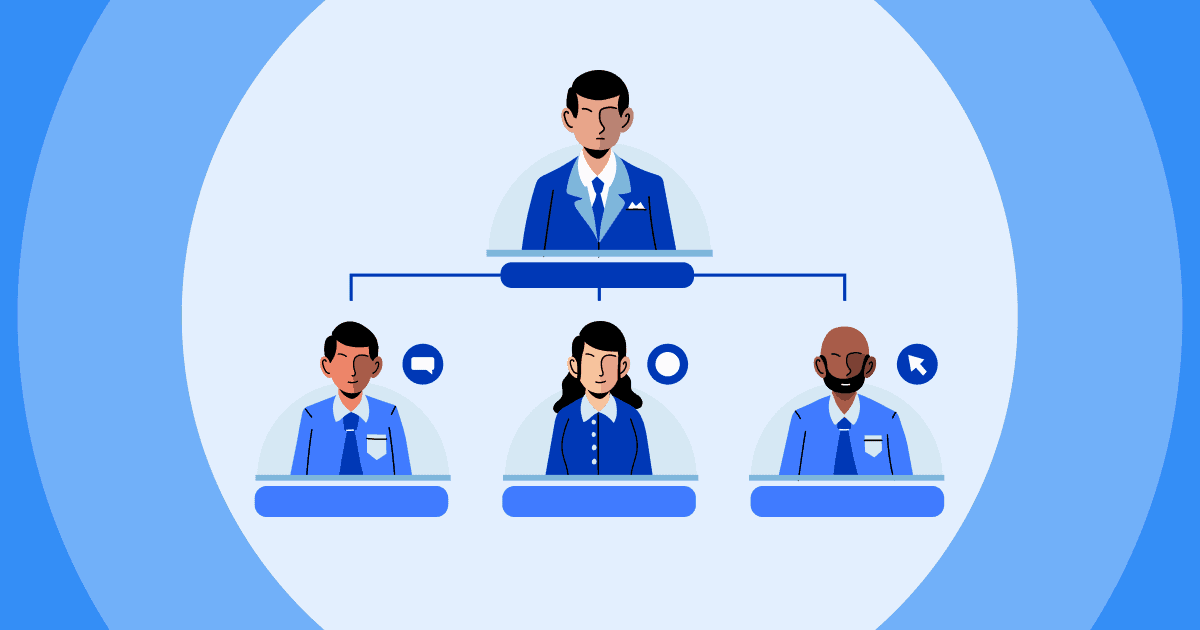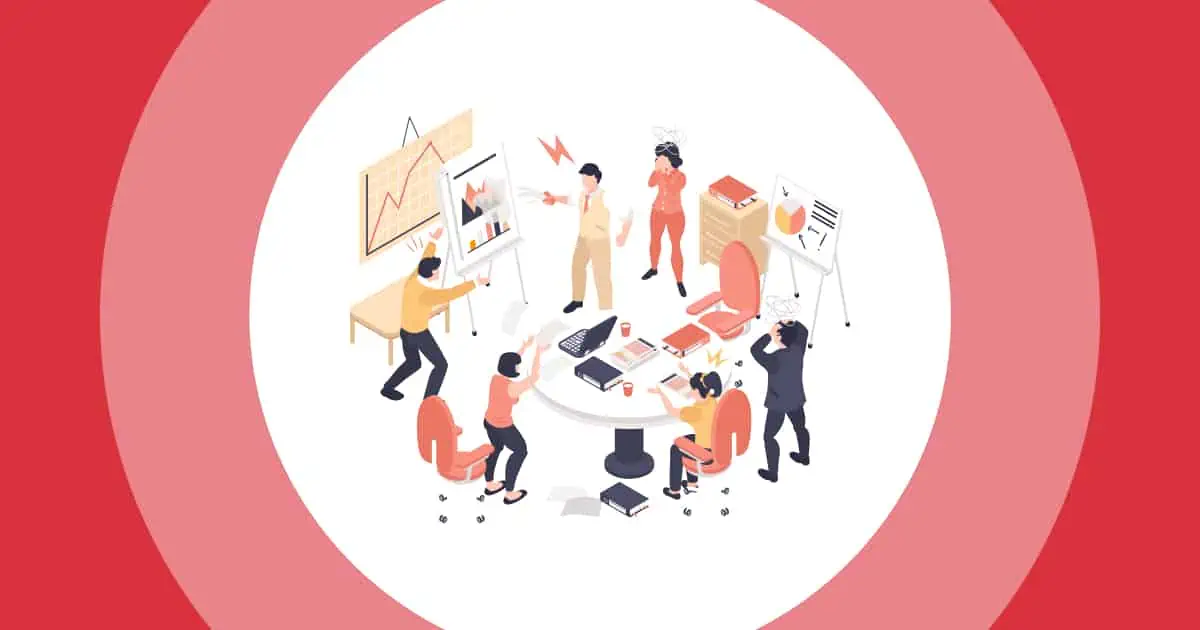有沒有想過為什麼有些公司似乎一切都井然有序,而另一些公司則一片混亂? 秘密往往在於他們的組織結構。
就像建築師設計建築藍圖一樣,公司的領導階層必須為其業務建立完美的框架。
但與靜止不動的建築物不同,公司是活生生的、會呼吸的有機體,必須隨著時間的推移而適應。
今天,我們將深入探討高績效組織的幕後,並揭示其運作的結構魔力。
我們將一起探索不同的 組織結構類型 看看哪一款最適合您。
Overview
| 最常用的組織架構是什麼? | 層次結構 |
| 最具挑戰性的組織結構類型是什麼? | 矩陣結構 |
| 如果貴公司的環境穩定,您可能會選擇哪種類型的結構? | 功能結構 |
目錄
AhaSlides 的更多提示
什麼是組織結構?

組織結構是指控制、協調和激勵員工共同努力實現組織目標的任務和報告關係的正式系統。 這 關鍵要素 定義組織結構的包括:
- 分工 – 將工作活動分解成具體的工作或任務。這涉及專業化和部門化。
- 部門化 – 根據職位的共同職能(例如行銷部門)或服務的客戶/目標群體(例如業務發展部門)將職位分組到各個部門。
- 指揮鏈-明確誰向誰報告的權力線,反映了組織內的層級結構。它顯示了管理層級和層級。
- 管理幅度-管理者能夠有效監督的直接下屬數量。管理幅度越大,管理層級越少。
- 集權與分權-指決策權在組織內的歸屬。集權結構將權力集中在高層,而分權結構則將權力分散。
- 形式化 – 規則、程序、指示和溝通的書面化程度。規範化程度越高,規則和標準就越多。
組織結構決定如何整合所有這些要素,以優化績效並實現公司目標。合適的組織結構類型取決於規模、策略、產業和 領導風格.
組織結構的類型
組織結構有哪些類型?
商業世界中通常有 7 種組織結構。在這些不同的組織結構中,有些結構將權力集中在高層,而有些結構則將權力分散到各個層級。有些結構優先考慮靈活性,而有些結構則優化控制。讓我們來探討一下商業中的組織結構類型:
#1。 以團隊為基礎的組織結構
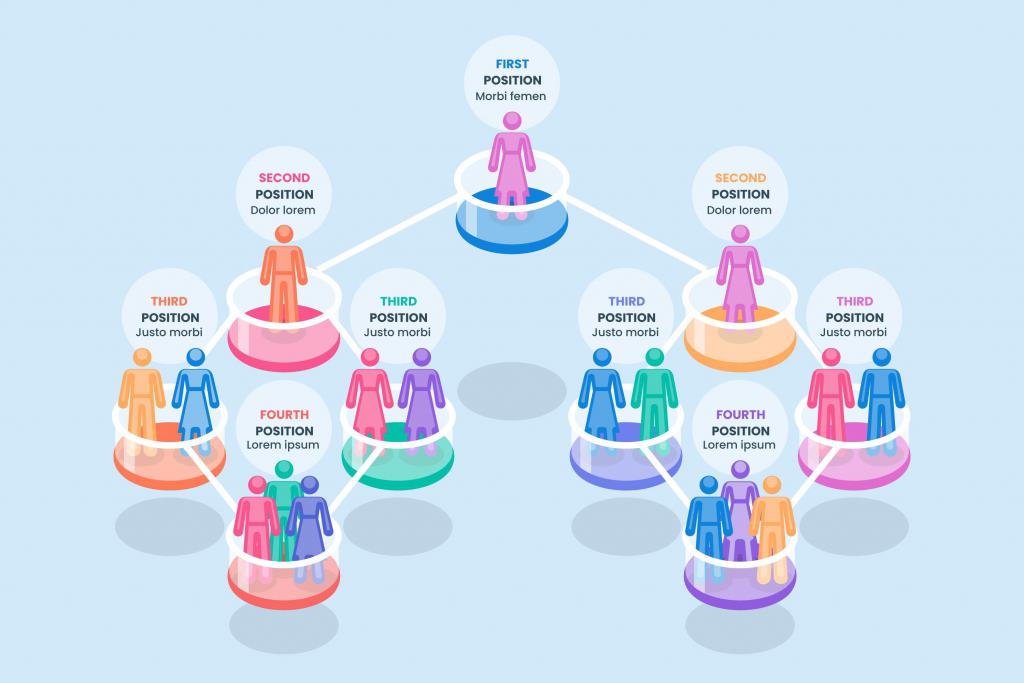
A 以團隊為基礎的組織架構 是一種工作主要圍繞著團隊而不是個人工作角色或傳統部門進行組織的工作。
團隊由來自不同職能領域或部門的員工聚集在一起,共同致力於特定的項目或目標。 他們關注共同的目標和成果,而不是個人目標。 成功或失敗是共同努力的結果。 這打破了 筒倉.
他們是自我管理的,這意味著他們擁有高度的自主權,能夠管理自己的工作流程,幾乎不受管理人員的監督。團隊無需上級核准,即可自行安排行程、分配任務、編列預算、管理流程和資源。
團隊之間的垂直層級結構較少,橫向協調和溝通較多。 基於團隊的組織結構為成員提供了大量互動和協作的機會,從而提高他們的團隊合作技能。
團隊成員可能會隨著項目和優先級的變化而變化。 員工可以同時屬於多個團隊。
#2. 網絡結構
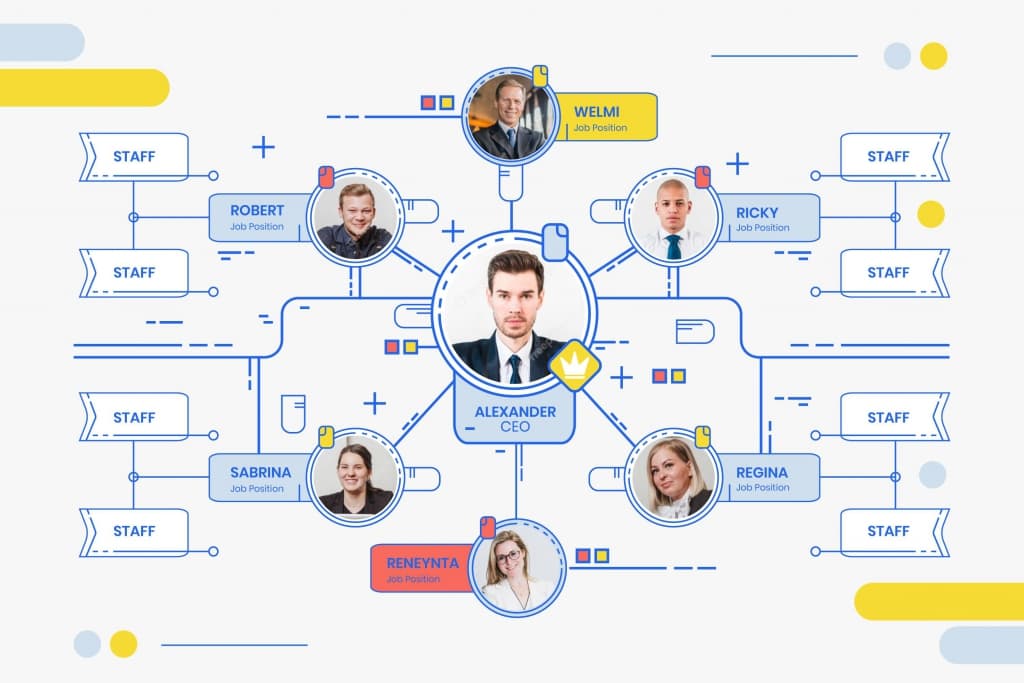
A 網路結構 組織設計中的「組織設計」是指基於靈活的、基於專案的團隊而不是固定的部門或工作角色的模型。
團隊是在每個項目的基礎上組建的,根據需要匯集不同的技能和角色。 項目結束後團隊解散。
沒有嚴格的管理者,而是多個團隊領導分擔責任。 權限是根據角色和專業領域分配的。
信息通過相互關聯的團隊橫向流動,而不是通過自上而下的層次結構。
工作角色是動態的,並根據技能/知識貢獻而不是固定的職稱來定義。
組織設計可以根據不斷發展的戰略和項目靈活變化,而不受僵化角色的限制。 個人貢獻是根據協作成功而不是個人績效指標來評估的。
#3。 層次結構
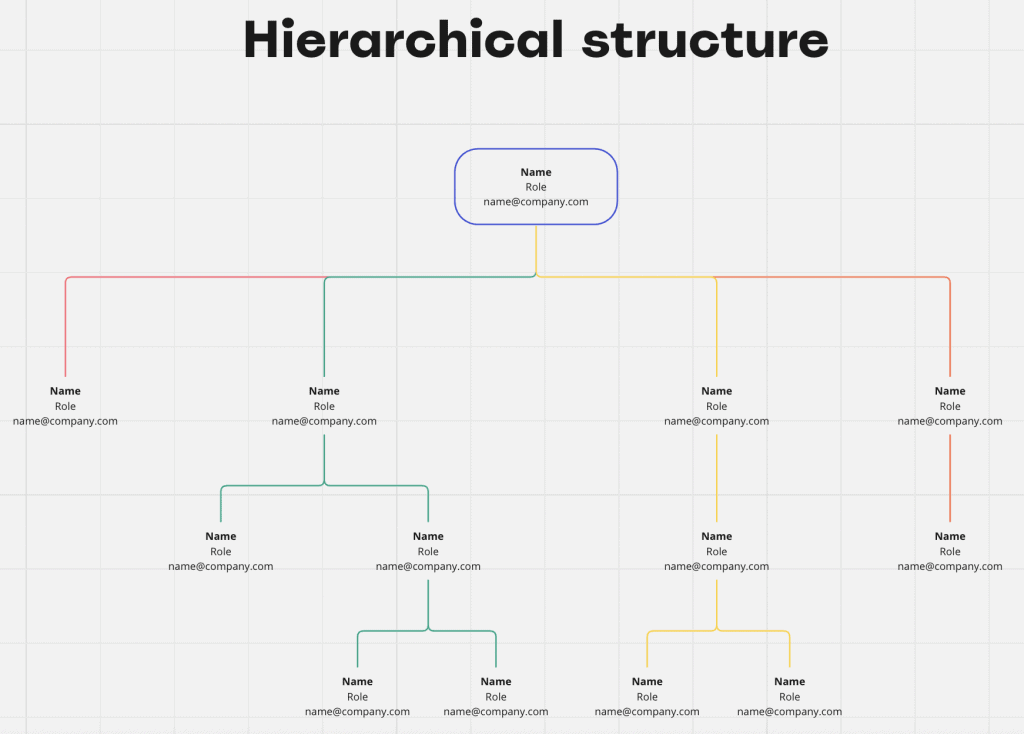
作為基本的組織結構之一, 層級組織結構 是傳統的自上而下的結構,權力從高階主管向下經過各級中階和基層管理人員流向第一線員工。
高階領導和副經理之間通常有多個層級的經理和副經理。 一線工作人員.
戰略決策由高層制定,下層的自主權較少。
工作細分為專門的業務任務和部門,靈活性有限,但顯示出清晰的晉昇路徑。
溝通主要通過管理層從上到下進行。
這種結構非常適合不需要靈活性的預測環境中的穩定、機械任務。
#4。 矩陣式組織結構
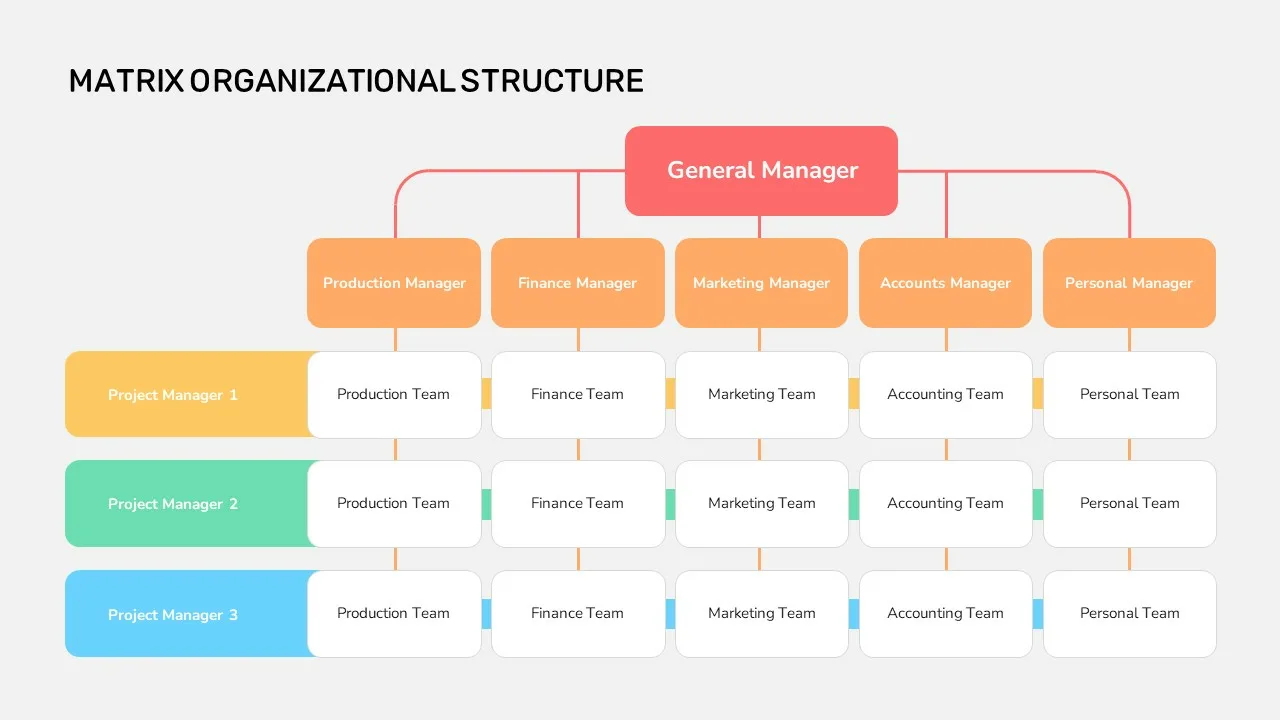
矩陣設置就像同時擁有兩個老闆。 人們不再只向部門中的一位經理匯報,而是同時向其職能主管和項目經理匯報。
該公司將來自不同團隊的人員聚集在一起執行特定項目。 因此,您可能會讓工程師、營銷人員和銷售人員在同一個項目團隊中工作一段時間。
當他們作為專案小組工作時,這些人仍然對其常規部門負責,因此行銷人員不僅要向行銷副總裁匯報,還要向專案主管報告。
這可能會導致一些問題,因為您可能會對任務感到困惑,並目睹部門經理和專案經理之間的衝突。
它確實允許公司聚集項目所需的所有專家。 人們在專業工作和更廣泛的項目中獲得經驗。
#5。 橫向/扁平化組織結構
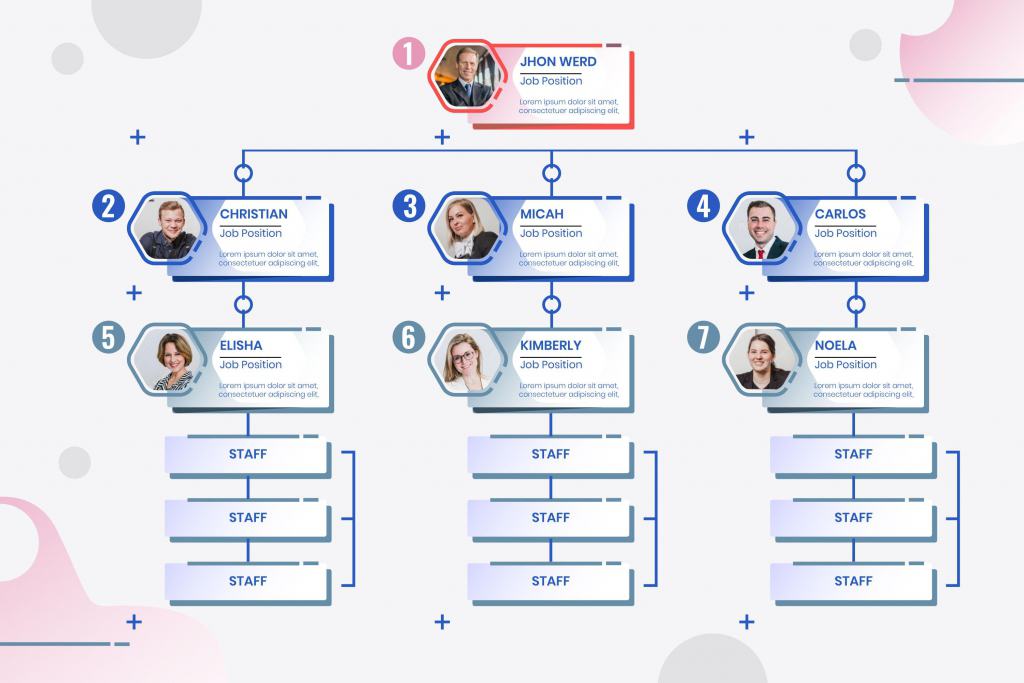
水平或 扁平化組織架構 是指高階主管和第一線員工之間沒有太多管理階層。它使工作更加橫向展開,而不是形成一個龐大而高大的層級結構。
在扁平結構中,信息往往更自由地流動,而無需在長長的指揮鏈中上下傳遞。 不同團隊之間的溝通也更加流暢。
高層的決策不那麼集中。 領導團隊試圖賦予個人貢獻者權力,並賦予他們對自己工作的所有權。
員工可以進行更多的自我管理,並擁有更廣泛的職責範圍,而不是非常狹窄的專業角色。
管理層級減少,管理成本隨之降低。由於請求無需經過層層審批,回應時間通常也會縮短。這對於需要快速決策的早期新創公司和小型企業來說非常適用。
#6。 職能組織結構
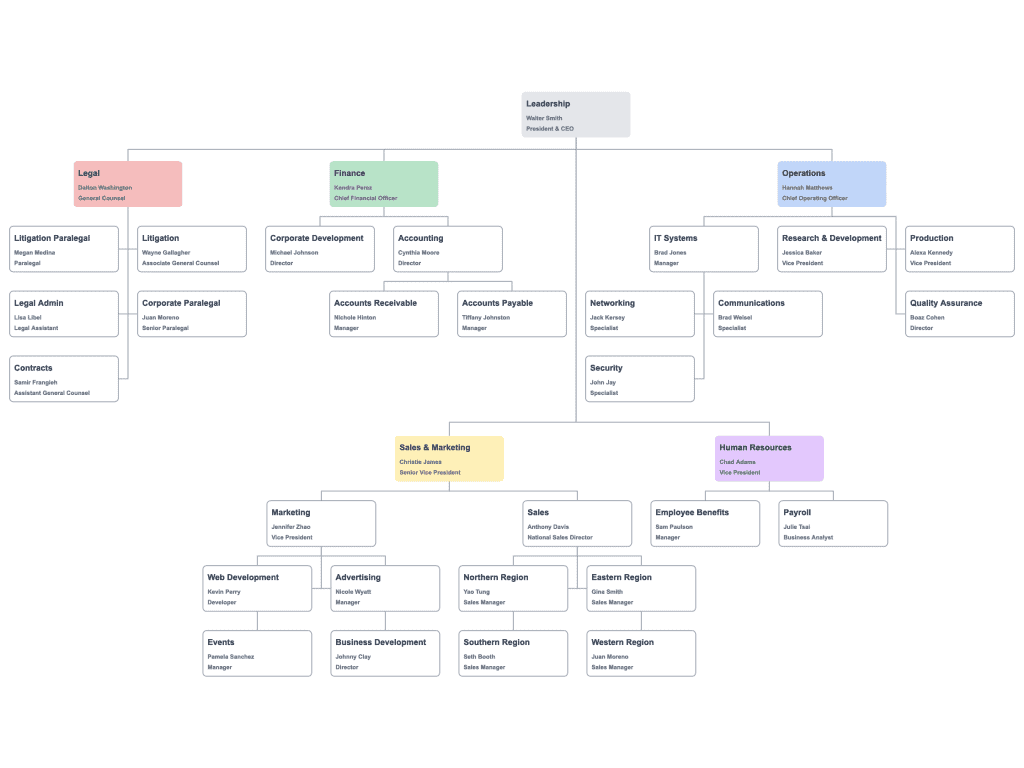
在 職能型組織結構公司內部的工作會根據專業知識或專長分組。換句話說,它是圍繞著業務職能進行組織的。
一些常見的職能部門包括:
- 行銷——負責廣告、品牌推廣、活動等。
- 營運——監督生產、供應鏈、履行等。
- 財務-負責會計、預算和投資。
- HR——招募並管理階層。
- IT——維護技術基礎設施和系統。
在這種模式下,同一領域(例如行銷)的人員會被集中到同一個部門。他們的上司會擔任該特定職能部門的副總裁或主管。
團隊內部專注於優化自己的專業,而跨職能的協調則需要自己的努力。 就像營銷策劃活動一樣,運營印刷宣傳冊等。
當員工周圍都是各自領域的其他人時,它有助於培養深厚的專業知識。 它在職能範圍內提供了清晰的職業道路。
然而,由於人們被孤島所分割,協作可能會更加困難。 客戶通過功能而非整體的視角來看待公司。
#7. 事業部結構
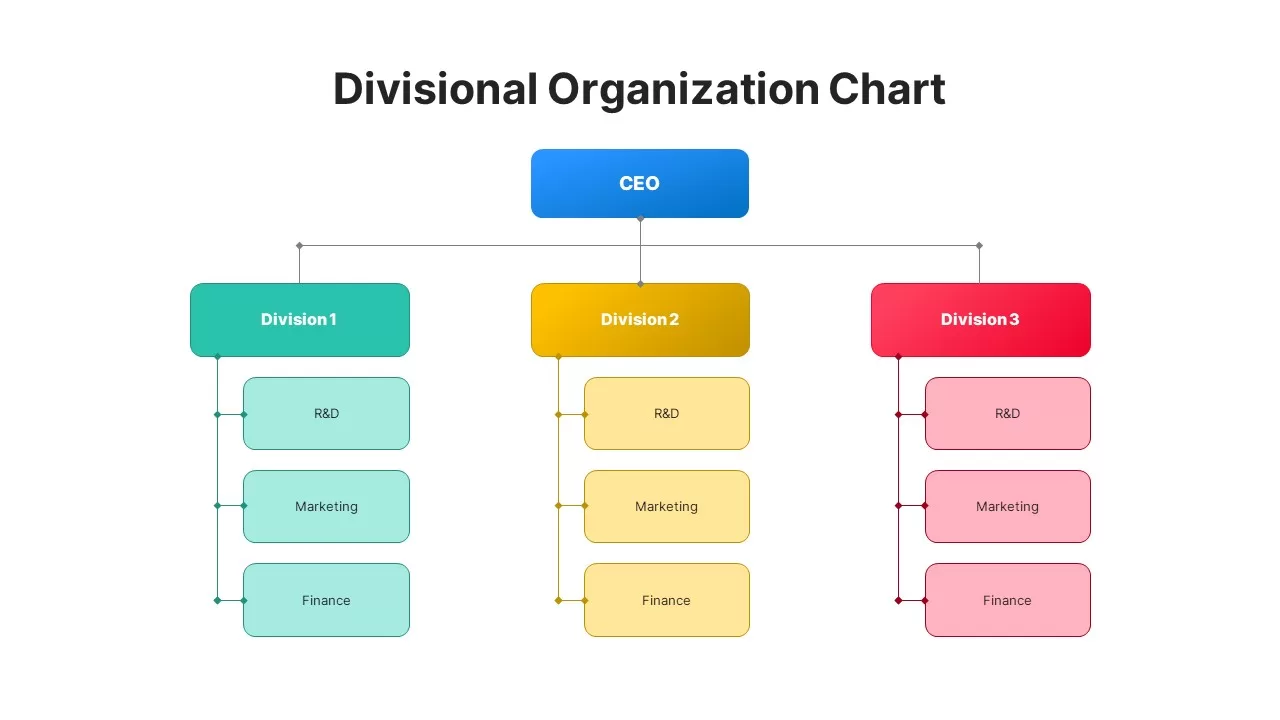
部門組織結構的定義似乎很容易理解。 透過部門設置,該公司基本上根據其生產的不同類型的產品或服務的地理位置將自己分為不同的部門。 它非常適合在不同行業或地方運營的多元化公司。
每個部門都獨立運作,幾乎就像一個小型公司。它擁有自己的人員和資源來處理行銷、銷售、製造等業務,以及該業務部門所需的一切。
這些單獨部門的領導者隨後向主要首席執行官匯報。 但除此之外,這些部門大部分都是自己做主,並致力於自己盈利。
這種結構讓每個部門真正專注於並根據其所處理的特定市場或客戶進行定制。 而不是對整個公司採取一刀切的方法。
缺點是協調一切都需要工作。 這些部門可能會開始各自做事,而沒有協同作用。 但如果管理得當,它可以為多個行業或領域的企業提供支持。
關鍵要點
大多數公司會根據其目標、規模和產業動態,整合不同的組織結構元素。合適的組織結構組合取決於公司的策略和營運環境,但這 7 種不同類型的組織結構涵蓋了全球各組織普遍使用的基本結構架構。
常見問題(FAQ)
組織結構有四種類型?
組織結構的四種主要類型是職能結構、事業部結構、矩陣結構和網絡結構。
5 組織類型是什麼?
組織有職能結構、項目結構、網絡結構、矩陣結構和部門結構五種類型。
